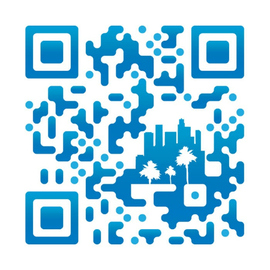 Rapid adoption of QR codes and other action codes is only part of the story in a new study. More important is the way that marketers are learning to use them more effectively.
Rapid adoption of QR codes and other action codes is only part of the story in a new study. More important is the way that marketers are learning to use them more effectively.
Nellymoser Inc. released a study of all 2011 issues of the top 100 U.S. magazines. It found that advertising drove the 439 percent increase in action codes from January through December. In January, there were seven advertising codes for each editorial code. By September, the ratio was nearly 25:1.
“In the beginning of the year, it was really very much an experiment,” says Roger Matus, Nellymoser executive vice president. “It seemed like somebody in the company had said, ‘Hey, we oughtta do mobile, and I heard about this thing. Let’s stick it on there.'”
Researchers scanned every QR Code, Microsoft Tag, Spyderlynk SnapTag, BEE Tag, JagTag, Digimarc watermark and other codes with an iPhone or Android device, activating every campaign, running every video and visiting every web page. QR codes accounted for 61 percent of all codes in the first quarter, growing to 72 percent in the fourth quarter. Microsoft Tags lost share, falling from 39 percent of all codes in Q1 to 25 percent in Q4. All other tags accounted for only 1 percent each in the last quarter.
Nellymoser is a mobile marketing and technology company that works mostly with publishers and ad agencies, handling the backend of scan marketing – from user experience and business logic to hosting and analytics.
By Q4, more than two-thirds of all action codes (1327 or 70 percent) were accompanied by information that described what happens after the scan, which is considered a best practice. On the other hand, there was a move away from embellishments such as customized codes or icons showing a phone to give people the idea.
Another evolution, Matus says, was the disappearance of SMS alternatives to scanning. “At the beginning of the year, people were worried there weren’t enough smartphones, so they would have also a texting option. Now only 3 percent have that,” he notes.
By the end of the year, Matus says, a clear picture of best practices and campaign goals emerged. Most were used for four purposes:
- Branding and demonstrations
- Data capture and list building
- Commerce, including online, store locators and coupons
- Sharing on social media
Illustrating the growing importance of mobile media, by the end of 2011, action codes rarely led to desktop websites.
From an advertiser’s point of view, a code “allows the person to act at the moment of their interest,” Matus says. “Typing a URL on your phone is a pain but remembering to go do it at your PC later on isn’t likely to happen. Mobile delivers instantly on the call to action.”
For more on QR codes, check out “Top 14 Things Marketers Need to Know About QR Codes” and “How to Use QR Codes for Better Conversion Rates“.
 Rapid adoption of QR codes and other action codes is only part of the story in a new study. More important is the way that marketers are learning to use them more effectively.
Rapid adoption of QR codes and other action codes is only part of the story in a new study. More important is the way that marketers are learning to use them more effectively.